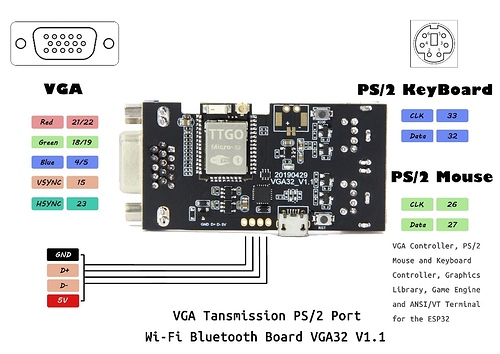Hi Ronny,
GIPO pins 16 and 17 are used for PSRAM on ESP32 Wrover modules (16-CE, 17-CLK, see https://docs.espressif.com/projects/esp-idf/en/latest/api-guides/external-ram.html).
I can think of that FabGL occupies his standard GPIOs even if it’s configured otherwise. To proove this we should connect a sdcard to a wroom board (i.e. a board without psram) connected to pins not normally used by FabGL) and proove, that the card is working when activating FabGL. If this is successful, we (maybe with help from fdivitto) should find the cause of the problem. If not successful, the problem seems to be in my uLisp code.
This is just a guess, but I think it may be the best way to go forward. With a wroom based module we can use the pins fdvitto suggested.
What do you think?
Best regards,
Kaef

